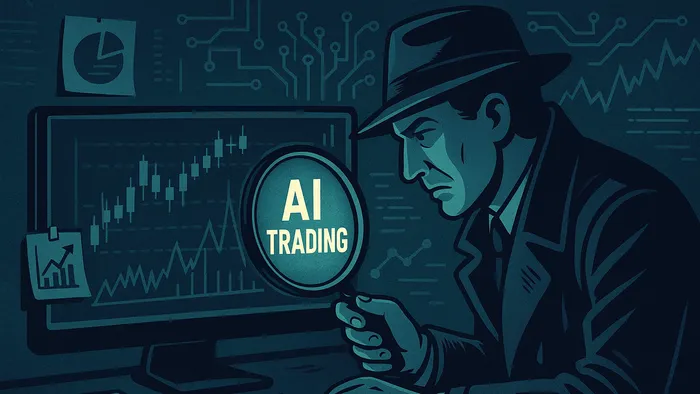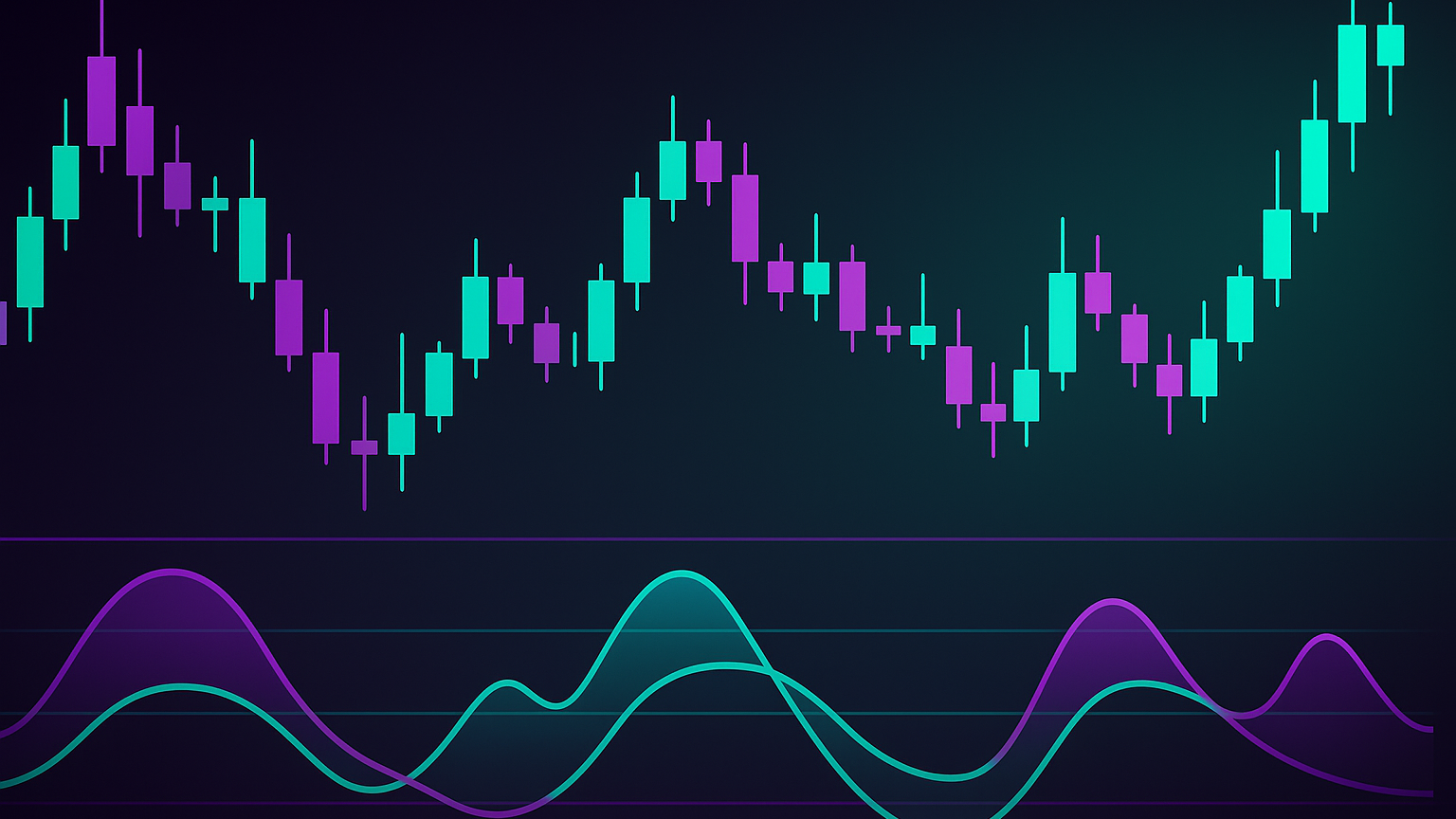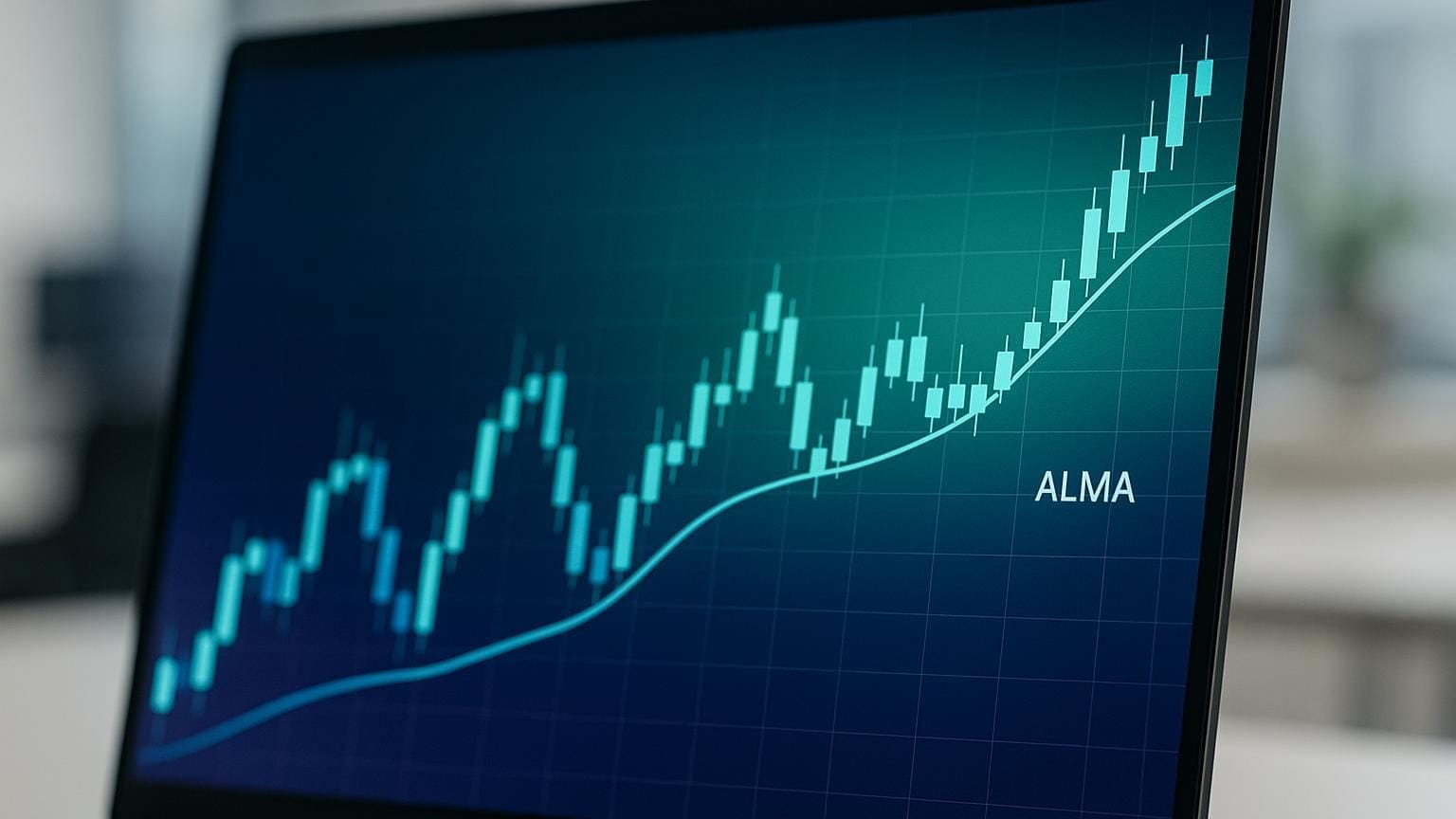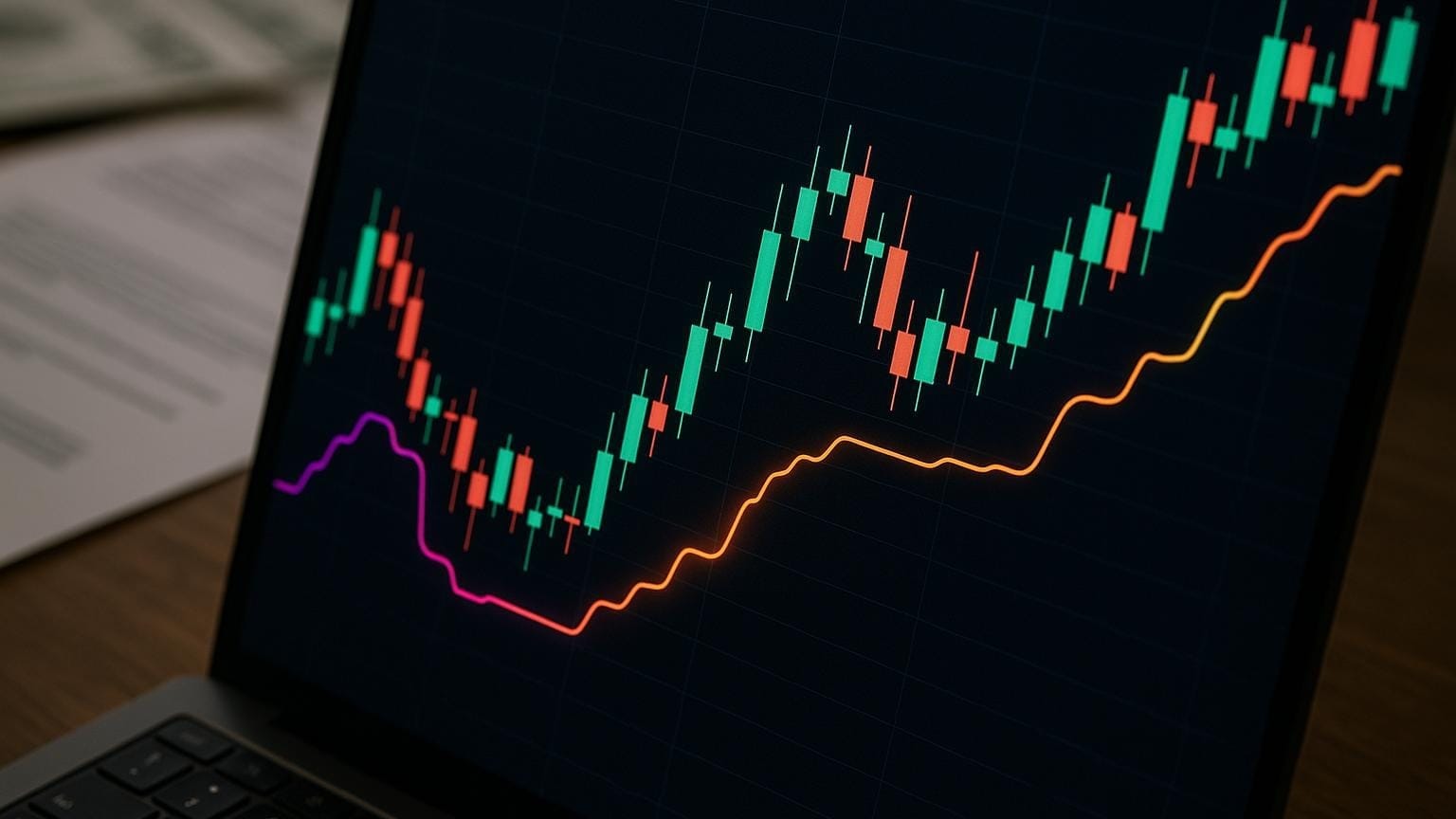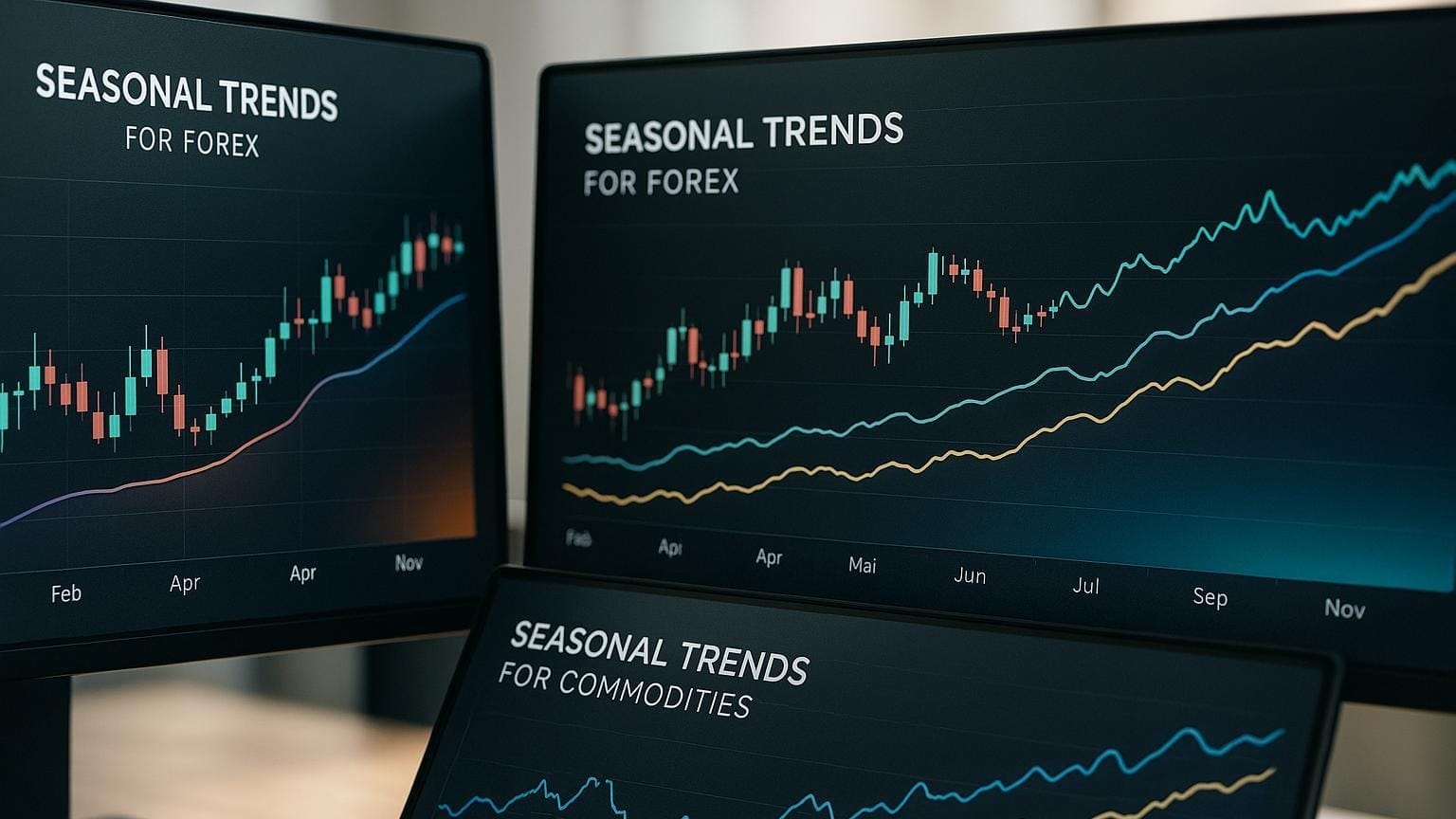Explore how AI trading enhances market analysis and execution, offering speed, accuracy, and improved risk management for investors.
AI trading is transforming how investors approach the market by combining speed, precision, and data-driven decision-making. Here’s what you need to know:
- Faster Execution: AI executes trades in milliseconds compared to manual methods.
- Data Analysis: Processes millions of data points—including news, social media, and financial reports—for better predictions.
- Risk Management: Automated controls can help reduce losses during volatility when configured and tested correctly.
- Improved Accuracy: AI models synthesize signals and sentiment to improve decision support; always validate with out‑of‑sample testing.
Quick Comparison: Traditional Trading vs. AI Trading
| Aspect | Traditional Trading | AI Trading |
|---|---|---|
| Speed | Manual, seconds to minutes | Automated, milliseconds |
| Data Sources | Limited | Multiple, including non‑standard |
| Emotional Bias | Influenced by emotions | Data‑driven decisions |
| Risk Management | Manual monitoring | Automated, dynamic adjustments |
Platforms such as LuxAlgo—which provides exclusive TradingView toolkits and an AI Backtesting platform—and Trade Ideas offer machine learning, NLP, and backtesting features to help traders refine strategies and improve outcomes. Start small, test strategies, and pair AI with human oversight for the best results.
Maximizing Trade Success with Trade Ideas AI

Key AI Trading Technologies
AI and machine learning are transforming how markets are analyzed by processing massive amounts of data with speed and precision. Below, we explore the core technologies driving these advancements.
Machine Learning for Price Prediction
AI systems leverage machine-learning models to predict price movements. As with all quantitative methods, validate models using a hold‑out set and walk‑forward analysis to avoid overfitting.
How machine learning enhances market analysis:
| Capability | Traditional Analysis | ML‑Enhanced Analysis |
|---|---|---|
| Pattern Recognition | Limited to known patterns | Identifies subtle/nonlinear patterns |
| Data Processing | Handles basic market data | Processes diverse data types simultaneously |
| Model Adaptation | Static models | Dynamically adapts to new market regimes |
| Decision Support | Prone to human bias | Consistent, data‑driven rules |
NLP Market Analysis
Natural‑language processing allows trading systems to analyze market sentiment by interpreting text from news outlets and social media. By scanning thousands of sources in real time, NLP converts unstructured content into actionable insights. Key applications include:
- Real‑time analysis of earnings calls
- Tracking sentiment on social platforms
- Interpreting financial reports
- Assessing the impact of breaking news on markets
Non‑Standard Data Sources
AI‑powered trading systems now tap into unconventional data to uncover unique market insights. For instance, LuxAlgo’s plans combine traditional metrics with alternative data such as social‑media sentiment, real‑time news, forum discussions, and market structure analytics via the Price Action Concepts toolkit.
This blend of data has tangible benefits—algorithmic traders often report productivity gains when they standardize workflows and automate post‑trade reviews. By integrating diverse information streams, traders can pinpoint inefficiencies and capitalize on arbitrage opportunities more effectively.
AI Trade Signal Generation
AI‑driven systems are increasingly used to create trade signals. Always evaluate signals across multiple assets and timeframes, and review edge stability over changing volatility regimes.
AI Technical Analysis
AI can evaluate multiple indicators concurrently and adapt to market shifts. Within LuxAlgo, the Signals & Overlays toolkit includes signal modes, configurable settings, and dynamic overlays for confirmation and contrarian strategies.
A study using LSTM and GRU networks with indicators like MACD, DMI, and KST found that GRU‑based systems outperformed traditional methods in markets such as NEPSE, BSE, and NYSE, helping to filter noise and identify opportunities.
Market Mood Analysis
AI goes beyond technical patterns to interpret market sentiment. As Pham The Anh notes:
“Sentiment analysis, powered by advanced NLP and machine‑learning techniques, provides clear insights into market dynamics.”
Sentiment‑based signals often excel at:
- Analyzing thousands of news articles and social posts in real time
- Measuring market mood on a continuous scale
- Detecting sentiment changes ahead of price moves
- Triggering alerts based on predefined sentiment thresholds
LuxAlgo Toolkits in Practice
LuxAlgo provides practical, real‑time TradingView toolkits for traders. With more than 15,000 users, LuxAlgo includes:
- Price Action Concepts (PAC) – automates detection of patterns and market structure
- Signals & Overlays (S&O) – provides diverse algorithmic signal generators
- Oscillator Matrix (OSC) – tracks divergences and money‑flow trends
The platform also features an AI Backtesting Assistant (docs) that can validate signals across different timeframes using configurable entry/exit rules and optimization.

Setting Up AI Trading Systems
After exploring core AI tools and signal‑generation methods, the next step is building effective AI trading systems for real‑world use.
AI Strategy Testing
LuxAlgo’s AI Backtesting Assistant tests trading strategies and can integrate with the TradingView Backtesters. For deeper control, use the PAC Backtester, S&O Backtester, and OSC Backtester. Enable forecasting to visualize forward paths (guide), and use optimization to search settings such as sensitivity (how it works).
AI Risk Controls
In March 2023, Bridgewater Associates unveiled Decision Maker, a machine‑learning model that analyzes economic data to spot market risks early. Modern AI risk controls often focus on three areas:
- Dynamic Position Sizing – adjusts trade sizes based on volatility and account risk metrics
- Automated Stop‑Loss – configure fixed or trailing rules in the Backtesters
- Risk Exposure Monitoring – real‑time tracking of portfolio risks across assets
Combining AI‑driven tools with manual oversight yields a refined, reliable risk‑management approach.
Mixed AI‑Manual Trading
Even with automation, human oversight remains vital. A hybrid of AI analysis and human judgment often produces better results. LuxAlgo’s Ultimate plan supports this approach with:
- Signal Verification – review AI‑assisted strategies before execution
- Risk Overrides – manual intervention for unexpected events
- Custom Alerts – set personalized conditions for notifications
Start small with limited position sizes, increasing exposure only as the system proves consistent.
What’s Next for AI Trading
The AI trading market is expected to grow significantly over the next decade, driven by technological advances, evolving regulations, and engaged trading communities.
New AI Trading Tech
Trade Ideas’ “Holly” exemplifies cutting‑edge AI in trading, processing large scenario sets daily and surfacing a small number of high‑conviction trades for review.
“In 2025, proprietary technology is more accessible with faster implementation, lower costs, and reduced complexity.”
| Technology | Impact on Trading |
|---|---|
| Cloud‑Based Systems | Enable 24/7 trading with lower infrastructure costs |
| Blockchain Integration | Brings greater transparency and security to transactions |
| Alternative Data Processing | Enhances analysis with unconventional data sources |
Rules and Ethics
As AI tools mature, regulators focus on ethical use. The SEC is scrutinizing how RIAs and broker‑dealers deploy AI to avoid conflicts of interest.
“Regulatory vagueness and compliance challenges may cause firms to hesitate on innovation through automation.”
To balance innovation and compliance, firms should:
- Use explainable AI for transparency
- Establish clear ethical guidelines
- Regularly audit AI impacts
- Continuously monitor for bias
Trading Communities
Accessible AI tools foster collaborative trading communities that share playbooks, datasets, and evaluation frameworks. These communities, technologies, and regulations are reshaping trading. AI trading is no longer just about single features—it’s about ecosystems that drive smarter, more connected strategies.
Conclusion
Main Points
AI trading reshapes market analysis and execution. Well‑tested quantitative models can improve decision support and help standardize risk management. Key benefits:
- Real‑Time Analysis – instant data processing for timely decisions
- Pattern Recognition – detects complex market trends
- Risk Management – automated safeguards reduce manual error
- Emotional Control – reduces psychological bias in execution
Getting Started
Adopt a step‑by‑step approach balancing automation with human oversight. LuxAlgo’s Free Plan offers lifetime access to the Library of free TradingView indicators. Upgrade to Premium ($39.99/mo) for advanced signals and oscillator tools on TradingView, or choose Ultimate ($59.99/mo) to include the AI Backtesting platform (see pricing).
AI works best when paired with human insight. To succeed:
- Start Small – use demo accounts to test strategies
- Compare Options – trial 2–3 AI platforms before committing
- Monitor and Adjust – review performance and tweak parameters
- Stay in Control – use supervised rules with clear risk limits
Trade Ideas, rated highly on software review sites, shows how AI can enhance trading while keeping users in control. Combining AI’s speed with human strategy helps achieve consistent, resilient results.
References
- LuxAlgo — Official Site
- LuxAlgo — AI Backtesting Assistant
- AI Backtesting Assistant · Documentation
- LuxAlgo — Pricing & Plans
- Price Action Concepts — Intro
- Price Action Concepts — Market Structures
- Signals & Overlays — Intro
- Signals & Overlays — Signal Modes
- Signals & Overlays — Settings
- Oscillator Matrix — Intro
- Backtester (PAC) — Intro
- Backtester (S&O) — Intro
- Backtester (OSC) — Intro
- Backtester (S&O) — Optimization
- Backtesters — Forecasting
- Trade Ideas — Official Site
- Bridgewater Associates
- U.S. Securities and Exchange Commission (SEC)
- Nepal Stock Exchange (NEPSE)
- Bombay Stock Exchange (BSE)
- New York Stock Exchange (NYSE)


